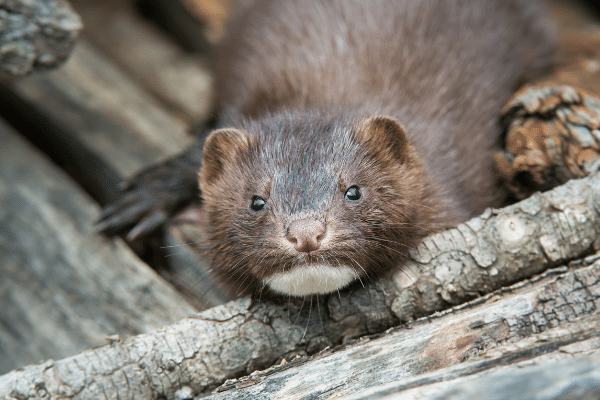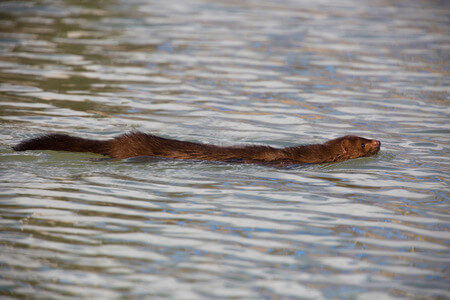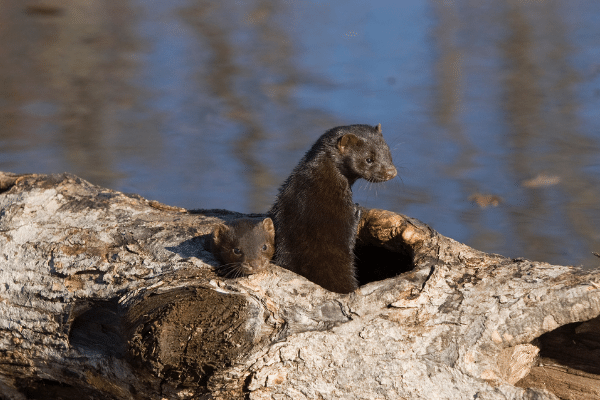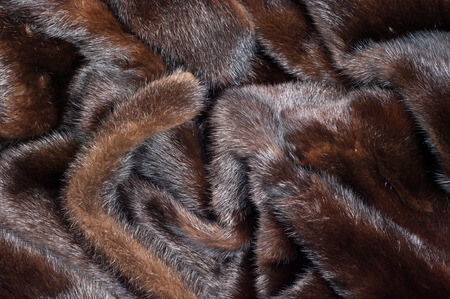- Home
- Trapping Mink
- Mink Facts
Mink Facts
This post may contain affiliate links so I earn a commission.
Whether you're an avid trapper who wants to learn a few mink facts to increase your success rate on the trapline, or you simply want to learn more about their diet, habitat and behavior, you'll quickly find that mink are a very unique animal.
The American mink and the European mink are the two living species of the animal that many of us simply refer to as "minks" or "mink."
Related to weasels, ferrets and ermines, mink have long slender bodies with short legs and webbed feet that aid in swimming.
They also have small rounded heads and short ears with a tail that's about 1/2 to 1/3 of its body length.

This slender body shape allows the mink to glide through the water and travel through burrows, brush and vegetation, while they search for food.
The North American mink, which can be found throughout most parts of North America and Canada, is larger than the European mink which inhabits most areas of Europe.
Mink are best known for their soft, dense, beautifully colored fur that's highly sought after in the fashion industry for producing coats, hats and jackets.
In fact, many trappers still consider the mink as a prized animal on the trapline due to its valuable fur and their ability to be illusive and difficult to trap for beginners.
Mink Facts - Habitat
Mink live in wooded areas that are near rivers, streams, ponds and marshes.
Thick vegetation, clumps of roots along the riverbank and even old beaver or muskrat dens are popular hunting areas for a mink.
Since mink have a natural tendency to travel though tunnels, these areas provide a great natural habitat.

Although they're primarily a land animal, mink have no problem spending much of their time in the water searching for food.
With slightly webbed feet and a long, thin body, mink glide almost effortlessly through the water and can even dive up to 16 feet!
Mink are very territorial, and their range generally stretches along riverbanks or marshes and can be up to several miles long.
Males typically do not get along with other males and their territories seldom overlap.
The territory of a male is generally larger than a females however, each will spend most of their time confined to a small food rich area within their territory, occasionally venturing out to secure the outer regions.
Mink Facts - Diet
Mink are carnivores which means they typically feed on frogs, crayfish, rabbits, muskrats, fish, minnows, birds, mice and other small mammals.

With small sharp teeth, a mink kills its prey by biting them on the back of the neck.
Surplus food is occasionally stored in their den, which could be a hole in a riverbank, old muskrat den or hollow log.
Many trappers love to use fresh muskrat meat or beaver meat in their sets.
Combined with a lure, these baits work great for trapping mink, especially later in the season.
For early season trapping, fish performs well.
Mink Facts - Reproduction
The mating season lasts from about February to April and mink have one litter per year of 6 to 10 offspring, with a gestation period of about 45 to 52 days.
Their young are weaned when they are about five to six weeks old but they will typically stay around their mother until the fall.
Mink Facts - Fur Industry
The fur on an American mink can range from brown to black, with a small amount of white on its chin and throat.

Their soft, dense fur has guard hairs which are covered with an oily substance that makes their coat waterproof.
Do to its smooth, sleek appearance, mink fur is very popular in the clothing and fashion industry.
The fur is used to make coats, jackets, hats and other various items.
In the late 19th century fur farms began breading American mink for their luxurious pelts as the demand for mink increased.
In 2005 Denmark, China, the Netherlands and the United States were the top ranked countries in mink production.
These mink farms now have the ability to breed many different color variations of mink ranging from pure white to almost a dark black.



